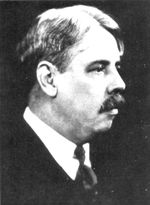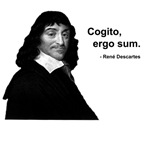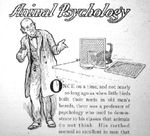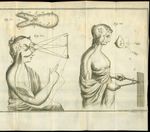“Psychological Science: The [Non-]Theory of Psychological Testing – Part 1” can be found HERE.
“Psychological Science: The [Non-]Theory of Psychological Testing – Part 2” can be found HERE.
Note: My views in these three articles on Psychological Test Theory (PTT) are limited to psychological science, particularly what we know as the statistical theory of psychological testing: Classical Test Theory (CTT) and Item Response Theory (IRT). While I do not cover, explicitly, classical infe rential statistics in psychological research, some of my ideas would extend to that domain, particularly on Plato's Ideal Forms, and the tautological nature of some psychological statistics. I have nothing to say about how my views apply, or not, to engineering, quantum physics, and neural activity in the brain. At times, I use 'overstatement' as a rhetorical device to make a point.
rential statistics in psychological research, some of my ideas would extend to that domain, particularly on Plato's Ideal Forms, and the tautological nature of some psychological statistics. I have nothing to say about how my views apply, or not, to engineering, quantum physics, and neural activity in the brain. At times, I use 'overstatement' as a rhetorical device to make a point.
“If a thing exists, it exists in some amount; and if it exists in some amount, it can be measured.” *
* –E. L. Thorndike (1874-1949), Introduction to the Theory of Mental and Social Measurements (1904)

“Thus, if we perceive the presence of some attribute, we can infer that there must also be present an existing thing or substance to which it may be attributed.” **
“For I freely acknowledge that I recognize no matter in corporeal things apart from that which the geometers call quantity, and take as the object of their demonstrations, ….” **
** –Rene Descartes (1596-1650), Principles of Philosophy. I:52 and II:64 (1644).
More philosophical embarrassments for psychology
These oft quoted, or paraphrased, ideas have been unfortunate for psychological science. E. L. Thorndike's pioneering contributions to educational, social, general, and industrial psychology, and animal behavior are substantial, without dispute. However, this forceful attempt to establish, with 'common sense', a justification for psychological testing, was no more than a restatement of Plato's Ideal Forms. At the beginning of his illustrious career, psychology and philosophy were commonly administered in the same college and university departments. During his lifetime we saw the ascendancy of psychological science as a discipline separate from philosophy, but with a vestige of relationship issues from the prior marriage of long standing.
Descartes gave us another problem, frustrating when we look back on it, that limited progress in 
 science and philosophy for nearly 400 years. When it came to mental life (thinking, reasoning, cognition, memory), there was a clear line of demarcation between humans and the rest of entire animal world. Humans could think, plan, imagine, reason, and solve complex problems; animals functioned at the level of instinct and base neural connections. Thorndike reinforced this notion by a refusal to see the possibility of human-like thought processes in research on animals. The problem of mind and body, since Descartes, advanced only by putting a hyphen between the two words, 'Mind-Body'. Fortunately, philosophy has stopped asking itself questions that can't be answered.
science and philosophy for nearly 400 years. When it came to mental life (thinking, reasoning, cognition, memory), there was a clear line of demarcation between humans and the rest of entire animal world. Humans could think, plan, imagine, reason, and solve complex problems; animals functioned at the level of instinct and base neural connections. Thorndike reinforced this notion by a refusal to see the possibility of human-like thought processes in research on animals. The problem of mind and body, since Descartes, advanced only by putting a hyphen between the two words, 'Mind-Body'. Fortunately, philosophy has stopped asking itself questions that can't be answered.
Read more »
Good job, Isaac! You've finally done it! We're in. We're in the 'Net!

